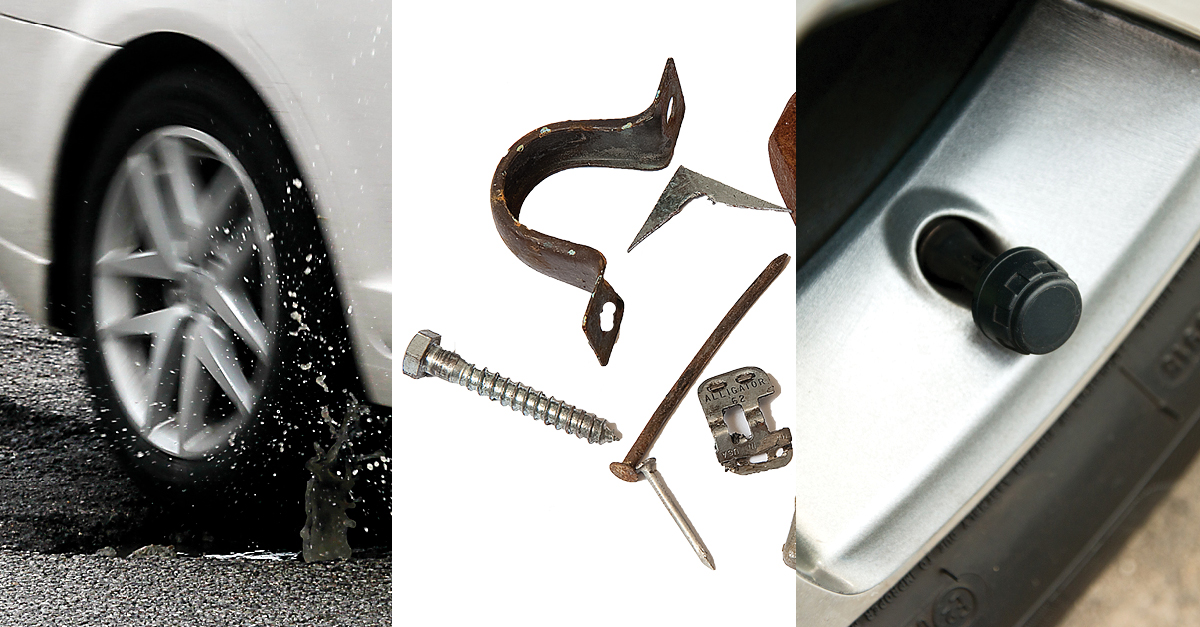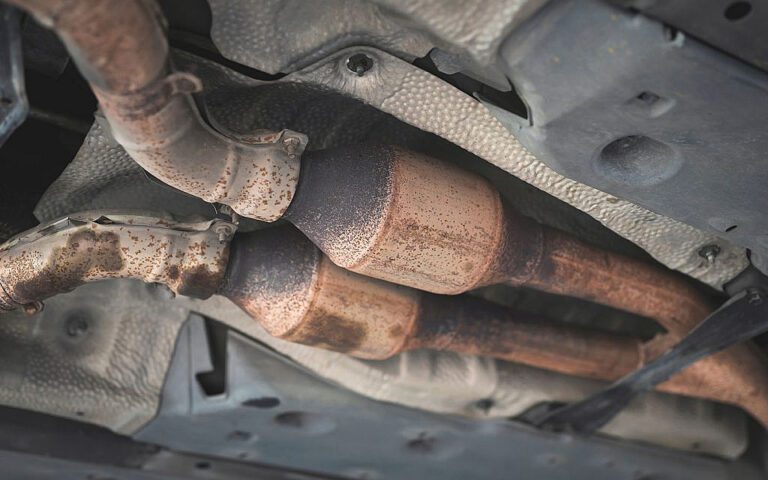How to Tell If Tire Has Slow Leak
To tell if a tire has a slow leak, look for gradual loss of air pressure over days or weeks. Check for visible punctures or damage on the tire surface.
Are you experiencing the inconvenience of having to frequently fill up your tires with air? Identifying a slow leak early can save you the hassle of a flat tire at an inconvenient time. By learning how to spot the signs of a slow leak in your tire, you can take proactive measures to address the issue before it becomes a bigger problem.
We will discuss how to easily determine if your tire has a slow leak, providing you with tips and guidance on what to look for.

Credit: techtirerepairs.com
Signs Of A Slow Tire Leak
If you suspect that your tire may have a slow leak, it’s crucial to be able to identify the signs early to prevent potential safety hazards on the road. Signs of a slow tire leak can go unnoticed, leading to decreased fuel efficiency and potential damage to the tire. By being proactive in recognizing the indications of a slow leak, you can prevent any potential mishaps and ensure your tire’s longevity.
Changes In Tire Pressure
One of the most telling signs of a slow tire leak is a noticeable drop in tire pressure. Regularly check your tire pressure using a tire pressure gauge to monitor any fluctuations. Consistently low pressure that doesn’t coincide with changes in temperature or driving conditions could indicate a slow leak.
Uneven Tire Wear
Another indication of a possible slow tire leak is uneven tire wear. Inspect your tires for any irregular wear patterns, such as excessive wear on one side compared to the other. Uneven tire wear can signal a tire that’s consistently under-inflated due to a slow leak.
Factors That Can Cause A Slow Tire Leak
Several common factors contribute to slow tire leaks, affecting the performance and safety of your vehicle. Understanding these causes can help you identify and resolve issues promptly to keep your tires in optimal condition.
Puncture Or Nail In The Tire
A puncture or nail embedded in the tire can lead to slow leaks over time.
Faulty Valve Stem
A damaged or faulty valve stem can result in air slowly escaping from the tire.
Bead Leak
Issues with the seal between the tire and wheel, known as the bead, can cause slow leaks.
Corroded Rim
Corrosion on the rim can create small gaps that allow air to escape gradually.
damaged Tire Sidewall
Damage to the sidewall of the tire can weaken its structure, leading to slow leaks.
Methods To Detect A Slow Tire Leak
Ensuring your tires are in good condition is essential for safe driving. Detecting a slow tire leak early can prevent potential hazards and keep you on the road smoothly. Here are some methods to help you identify a slow tire leak:
Visual Inspection
Regularly inspect your tires for visible punctures, nails, or foreign objects embedded in the tread.
Using Soapy Water
Apply soapy water to the tire and look for bubbling, which indicates a slow leak where air is escaping.
Using A Tire Pressure Gauge
Measure tire pressure with a gauge to identify any significant decrease in pressure from the recommended level.
Monitoring Tire Pressure Over Time
Regularly check and record the tire pressure and observe if there is a gradual loss over time, indicating a slow leak.

Credit: www.cars.com
Preventive Measures To Avoid Slow Tire Leaks
Regular Tire Maintenance
Regular tire maintenance is crucial for preventing slow tire leaks. Inspect your tires for punctures, nails, or any visible damage. Schedule regular tire inspections and rotations to ensure even wear and detect potential issues early on.
Avoid Road Hazards
Avoiding road hazards such as potholes, sharp objects, and curb impacts can help prevent slow tire leaks. Stay alert while driving and be mindful of the road conditions to avoid potential hazards that could damage your tires.
Proper Tire Inflation
Maintaining proper tire inflation is essential to prevent slow tire leaks. Check your tire pressure regularly and inflate them to the recommended PSI provided by the manufacturer. Underinflated tires are more prone to leaks, so be sure to keep them properly inflated.
Actions To Take If You Suspect A Slow Tire Leak
If you suspect a slow tire leak, there are certain actions you can take to confirm it. Look for signs such as decreased tire pressure, visual inspections, and using soapy water to find the source of the leak. Don’t ignore this issue as it can lead to potential safety hazards on the road.
Inspect The Tire
Inspecting your tires is the first step you should take if you suspect a slow tire leak. By visually examining your tires, you can often identify any signs of damage or a leak. Here are a few key actions you can take:
- Inspect the tread: Look for any uneven wear patterns or bald spots. Uneven wear might indicate an issue with the tire’s inflation or alignment.
- Check for punctures or cuts: Carefully examine the entire surface of the tire, including the sidewalls, for any visible punctures or cuts. These can be potential sources of leaks.
- Feel for air leakage: Run your hand over the tire’s surface and sidewalls, paying attention to any areas that feel more deflated than others. This can indicate a slow air leak.
- Use soapy water: Mix a small amount of dish soap with water and apply it to the tire surface using a sponge or spray bottle. Watch for any areas where bubbles form; this can indicate a leak as well.
Repair Or Replace The Tire
If you find that your tire indeed has a slow leak, it’s essential to take appropriate action. Depending on the severity of the leak and the extent of the damage, you may have a couple of options:
- Repair the tire: If the leak is minor and the damage is within a repairable range, you can consider repairing the tire. Take it to a professional technician who can assess the damage and determine if it’s suitable for a repair. If so, they will likely patch or plug the damaged area.
- Replace the tire: In some cases, the damage may be too extensive to repair. This can be the case if the leak is in the sidewall or if there are multiple punctures. In such situations, it’s best to replace the tire entirely for your safety and to maintain optimal performance.
Consult With A Professional
If you’re unsure about the severity of the slow tire leak or if you don’t feel confident in assessing the tire on your own, it’s always a good idea to consult with a professional. They have the expertise and knowledge to accurately diagnose the issue and recommend the best course of action.
A professional tire technician can provide a comprehensive inspection, evaluate the tire’s condition, and provide expert advice on repairing or replacing it. They can also help identify any underlying causes of the slow leak, such as rim damage or valve issues.

Credit: www.firestonecompleteautocare.com
Frequently Asked Questions For How To Tell If Tire Has Slow Leak
How Do You Check For A Slow Leak In A Tire?
To check for a slow leak in a tire, visually inspect the tire for any nails, screws, or other objects. Use soapy water to spot bubbles at the site of a leak. Check tire pressure regularly to monitor any gradual loss.
Can I Drive On A Tire With A Slow Leak?
Yes, driving on a tire with a slow leak is risky as it can lead to a flat tire or blowout.
Does A Slow Leak Mean I Need A New Tire?
A slow leak may not always mean you need a new tire. It could be repairable with a patch or plug depending on the location and severity of the puncture.
Why Does My Tire Have A Slow Leak But No Hole?
A slow leak in your tire with no visible hole could be due to a damaged valve stem, corroded rim, or a tire bead not properly seated. Visually inspect these areas or seek a professional for a thorough diagnosis and repair.
How Can I Tell If My Tire Has A Slow Leak?
To check for a slow leak, inspect the tire for any visible punctures, listen for hissing sounds, and monitor the tire pressure regularly.
What Are The Signs Of A Slow Leak In A Tire?
Common signs of a slow leak include decreased tire pressure, frequent need to fill air, uneven tire wear, and steering problems.
Can A Slow Leak In A Tire Cause A Blowout?
While a slow leak may not directly cause a blowout, driving with low tire pressure increases the risk of tire failure and sudden blowouts.
Conclusion
Detecting a slow tire leak is crucial for maintaining safety and performance. By regularly checking tire pressure and visually inspecting for any signs of damage, you can prevent potential hazards. Additionally, utilizing a tire pressure monitoring system can provide added peace of mind.
Remember, proactive maintenance can save you time and money in the long run.


